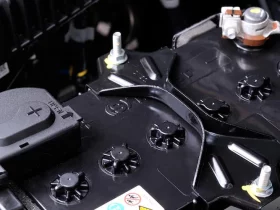The ABS (Anti-lock Braking System) light is an important indicator in your vehicle that should not be ignored.
When this light illuminates on your dashboard, it is indicating a potential issue with your braking system. Such as reduced braking power and increased stopping distance.
Significance of the ABS Light
The ABS light serves as a vital indicator of potential brake system issues in your vehicle. When illuminated, it is crucial to take immediate action to diagnose and address the problem.
Several factors can trigger the ABS light, including a faulty ABS module, sensor malfunction, low brake fluid, or a malfunctioning brake pedal switch. It is essential to understand that the ABS light does not necessarily mean that your vehicle’s brakes are completely unusable.
Determining the Severity
Determining the severity of an illuminated ABS light is crucial in understanding the potential risks and consequences of driving with this warning light on. While it may be tempting to ignore or postpone addressing the issue, doing so can have serious implications for your safety on the road.
Driving with the ABS light on means that the anti-lock braking system is not functioning correctly. This can significantly affect your vehicle’s ability to maintain control during emergency braking situations.
It is important to consider the impact on other electronic systems within your vehicle. The ABS light may indicate a broader issue with the car’s electrical system, potentially affecting other safety features like stability control or traction control.
Seeking Professional Assistance
Driving with an illuminated ABS light is not a situation that should be taken lightly. While it may be tempting to postpone addressing the issue, it is crucial to prioritize your safety on the road. The risks associated with driving with the ABS light on include compromised braking control.
If you notice the ABS light is on, it is important to seek professional assistance promptly. Certified automotive technicians have the expertise and diagnostic tools necessary to accurately identify and resolve the underlying issue.
Your safety and the safety of others on the road should always be a top priority. So, don’t hesitate to schedule an appointment with a trusted mechanic to address the ABS light issue.
Debunking Common Myths
One common misconception is that driving without the ABS system functioning properly is not a big concern because you can still use your regular brakes. However, this is not entirely accurate. While you can still brake without the ABS system.
It is important to note that the ABS system enhances your vehicle’s braking performance by preventing wheel lock-up during sudden or hard braking situations. This significantly reduces the risk of skidding or losing control of your vehicle.
Driving with the ABS light on can also have an adverse effect on other electronic systems in your vehicle. The ABS system is interconnected with various electronic components, such as the traction control system and stability control system.
Taking Responsibility
While it’s tempting to brush off the ABS light as a mere inconvenience, it is crucial to take prompt action when it comes to maintaining safety on the road. Driving with the ABS light on can have legal implications that you should be aware of.
In some jurisdictions, it is illegal to drive a vehicle with a malfunctioning ABS system. Law enforcement agencies consider this a hazard to yourself and others on the road. If you are involved in an accident and it is determined that you were aware of the ABS light.
Insurance companies may also take into account the functionality of your vehicle’s safety systems, including ABS, when determining coverage or settling claims. Failure to address the ABS light may impact your insurance coverage and could potentially lead to higher premiums.
Conclusion
It is crucial to prioritize vehicle safety and take immediate action when the ABS light illuminates on your dashboard. Not only can driving with a malfunctioning ABS system have legal implications, but it can also impact your insurance coverage and premiums.
To ensure compliance with the law, it is important to familiarize yourself with the regulations in your jurisdiction regarding driving with the ABS light on. Seeking expert advice from a qualified mechanic or technician is highly recommended to diagnose and address the underlying issue causing the ABS light to illuminate.
Remember, the ABS system is designed to enhance your vehicle’s braking performance and overall safety. Neglecting to address an ABS issue can put yourself and others at risk on the road. So, prioritize safety, seek professional assistance, and drive responsibly.










